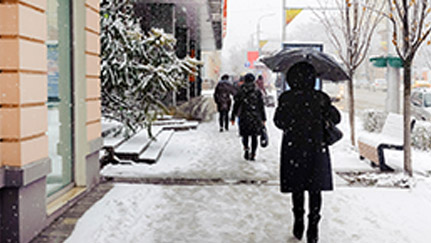Step up efforts to keep your walking surfaces clear and dry – and employees and customers safe.
Subscribe to our newsletter for timely content in your inbox

Falls take around 12,000 lives and cause more than 30,000 disabling injuries annually, reports the Occupational Safety and Health Administration (OSHA). Those numbers don’t even approach the number of lesser injuries caused by slips, trips and falls every year.
In many parts of the country, rain, snow and ice add to the risk. According to the National Floor Safety Institute, 80% of slips happen on wet floors.
So, consider stepping up your efforts to keep walking surfaces clear and dry — and employees and customers safe.
Drivers getting in and out of vehicles are especially susceptible to falls. The risk rises substantially in the presence of mud, ice or snow. It’s a risk faced by all drivers, but it’s particularly high for operators of large trucks.
Instruct your truck drivers to always use the three-point stance while getting in and out of their cabs. This means always keeping both hands on the vehicle for support as you raise or lower one leg at a time.
Although winter weather presents a heightened risk for slips and falls due to wet floor surfaces, it’s by no means the only factor. Spills can occur anywhere. Instruct all workers to clean up all spills immediately. We also suggest your safety committee conduct a walk-through of your entire operation to identify hazards while employees are at work. Information gathered should be used to minimize each identified hazard.
Slip, Trip and Fall Risk Assessment Tool
Preventing Slips and Falls